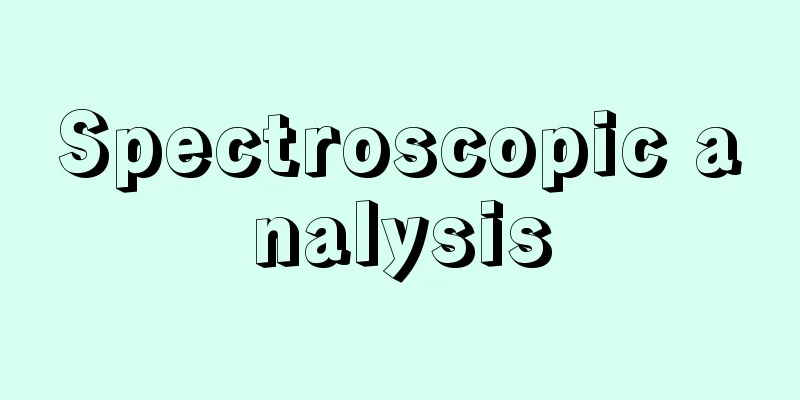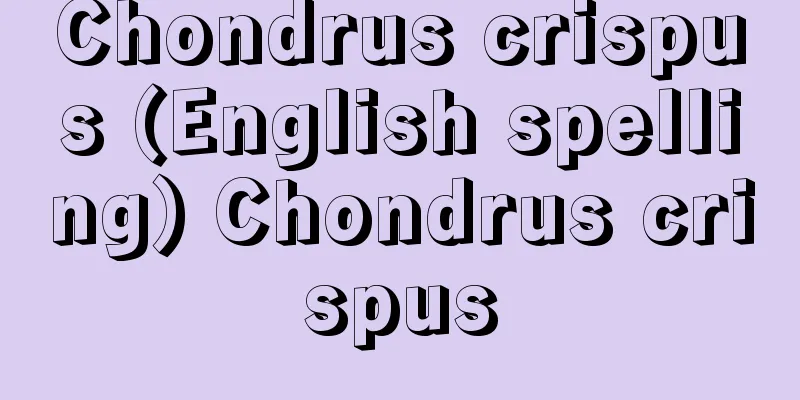Danish seine trawl

|
It belongs to the category of bottom trawl fishing gear. A motorized fishing vessel (except for steam trawlers) that is equipped with a net-mouth opening device and operates to catch bottom-dwelling organisms using a bottom trawl is collectively called a mechanical bottom trawl. In Japan, for administrative purposes, they are broadly divided into small mechanical bottom trawl, offshore bottom trawl, and western bottom trawl. Depending on the number of fishing vessels used, they are further divided into one-trawl bottom trawl and two-trawl bottom trawl, and are further divided according to the size of the fishing vessel, fishing ground, fishing gear, fishing method, etc. Small motorized bottom trawl is a fishery permitted by the governor that uses bottom trawl nets from motorized vessels with a gross tonnage of less than 15 tons. Depending on the fishing gear and fishing method, there are types such as hand-pulling type 1, type 2, type 3, utase, and others. In terms of the structure of the fishing gear, hand-pulling type 1 does not have any opening device at the net mouth and therefore falls under motorized bottom trawl, while hand-pulling type 2 has a beam at the net mouth and hand-pulling type 3 has a girder at the net mouth. The name "teguriami" originally came from the idea of pulling in a net by hand in the days of non-powered boats. Nowadays, it has come to mean a vertical drag fishing method in which a net is pulled in the direction the boat is moving, and is used in contrast to the horizontal drag fishing method of uchiseami. Until the Taisho era, there was no division of fishing grounds between offshore bottom trawl and western bottom trawl, but because of constant conflicts between coastal fisheries and bottom trawl fisheries in the Honshu area, in 1924 the fishing areas were divided into west and east of 130 degrees east longitude. This division has changed many times, and the current line is 128 degrees 30 minutes east. The eastern motorized bottom trawl is the predecessor of the current offshore bottom trawl. The motorized bottom trawl, which is a fishing method using two boats, was created around 1919-1920 (Taisho 8-9) when a Shimane Prefecture bottom trawl fishing boat tried to use two boats around the Goto Islands in Kyushu and had good results, and it is a fishing method that was mainly operated in the western waters. The catches are mainly high-value, high-quality fish and shellfish, such as flatfish, Alaska pollock, and Atka mackerel, shrimp, scallops, clams, surf clams, sea cucumbers, and sea urchins. According to statistics for 2011, the catches of western bottom trawls were 5,815 tons, of which 315,000 tons were caught by offshore bottom trawls, and 424,000 tons by small bottom trawls. [Hideo Soeda and Kiyoshi Yoshihara] [Reference] | | | | |Source: Shogakukan Encyclopedia Nipponica About Encyclopedia Nipponica Information | Legend |
|
漁業の底引網のうち引網漁具に属す。網口開口装置を有する汽船トロール漁船を除く動力漁船を用い、底引網を用いて底生生物を漁獲する目的で操業するものを総称して機船底引網という。日本では行政上、小型機船底引網、沖合底引網、以西底引網に大別される。また、使用する漁船の隻数によって、一艘(そう)引機船底引網と二艘引機船底引網に分類され、漁船の大きさ、漁場、漁具、漁法などにより細分されている。 小型機船底引網は、総トン数15トン未満の動力船により底引網を使用して行う知事許可漁業である。漁具や漁法によって、手繰(てぐり)第1種、同第2種、同第3種、打瀬(うたせ)、その他に種類が分けられる。漁具の構造上、手繰第1種は網口に開口装置をまったく有しないので機船底引網に該当するが、手繰第2種は網口にビーム(梁(はり))を有し、手繰第3種は網口に桁(けた)を有している。 手繰網とは元来、無動力船時代に網を手繰(たぐ)り寄せたという意味に由来する名称であった。現在では、船の進行方向に曳網(えいもう)するいわゆる縦引き漁法の意味で定着し、打瀬網の横引き漁法とは対象的に用いられている。 沖合底引網と以西底引網は、大正年間まで漁場の区分はなかったが、本州方面では沿岸漁業と底引網漁業との紛争が絶えなかったため、大正13年(1924)に東経130度以西と以東に操業海域が区別された。この海域区分は幾度となく変更され、現在は128度30分で線引きされている。以東機船底引網は現在の沖合底引網の前身である。また2艘による機船底引網が誕生したのは、1919~1920年(大正8~9)ごろ、島根県の底引漁船が九州の五島列島周辺で二艘引を試みて好成績をあげたことからで、主として以西水域で操業された漁法である。 漁獲対象はカレイ・ヒラメ類、スケトウダラ、ホッケなどの底生魚類、エビ類、ホタテガイ、アサリ、ウバガイ(ホッキガイ)などの貝類、ナマコ、ウニなどで、単価の高い高級魚貝類が中心である。2011年(平成23)の統計では、以西底引網が漁獲量5815トン、沖合底引網が31万5000トン、小型底引網が42万4000トンとなっている。 [添田秀男・吉原喜好] [参照項目] | | | | |出典 小学館 日本大百科全書(ニッポニカ)日本大百科全書(ニッポニカ)について 情報 | 凡例 |
<<: Bottom trawl fishing - Kisen Sokobiki Ami Gyogyō
Recommend
Legacy - Yuiryo
〘 noun 〙 The territory that is left after someone&...
Aiikuhan
...In 1963, the Aiiku Research Institute was esta...
Ileus
Concept A condition in which the propulsion of int...
Switching network
A circuit network is a representation of the struc...
Protomyces lactucae (English name)
…[Tsubaki Keisuke]. . . *Some of the terminology ...
Sudden infant death
...In areas where there is no medical examiner sy...
Prajnaparamita Sutra - Hannyakyo
A general term for the earliest group of sutras i...
Shobogenzo Zuimonki - Shobogenzo Zuimonki
A Buddhist book from the Kamakura period. Six vol...
Latvian - Ratobiyago (English spelling)
It is the national language of the Republic of La...
Borrassá, L. (English spelling) BorrassaL
...In Italy, this style is reflected not only in ...
Santa Cruz (English spelling)
It is the second largest city in Bolivia and is lo...
Kawagoe Daishi
This is the common name for Kita-in Temple (mounta...
Yoshida Ippo
Year of death: 1779 Year of birth: Unknown. A lect...
FO - Forerunner
The central organization of right-wing trade unio...
Isoprene Rule
A hypothesis that the carbon skeleton of isoprenoi...









